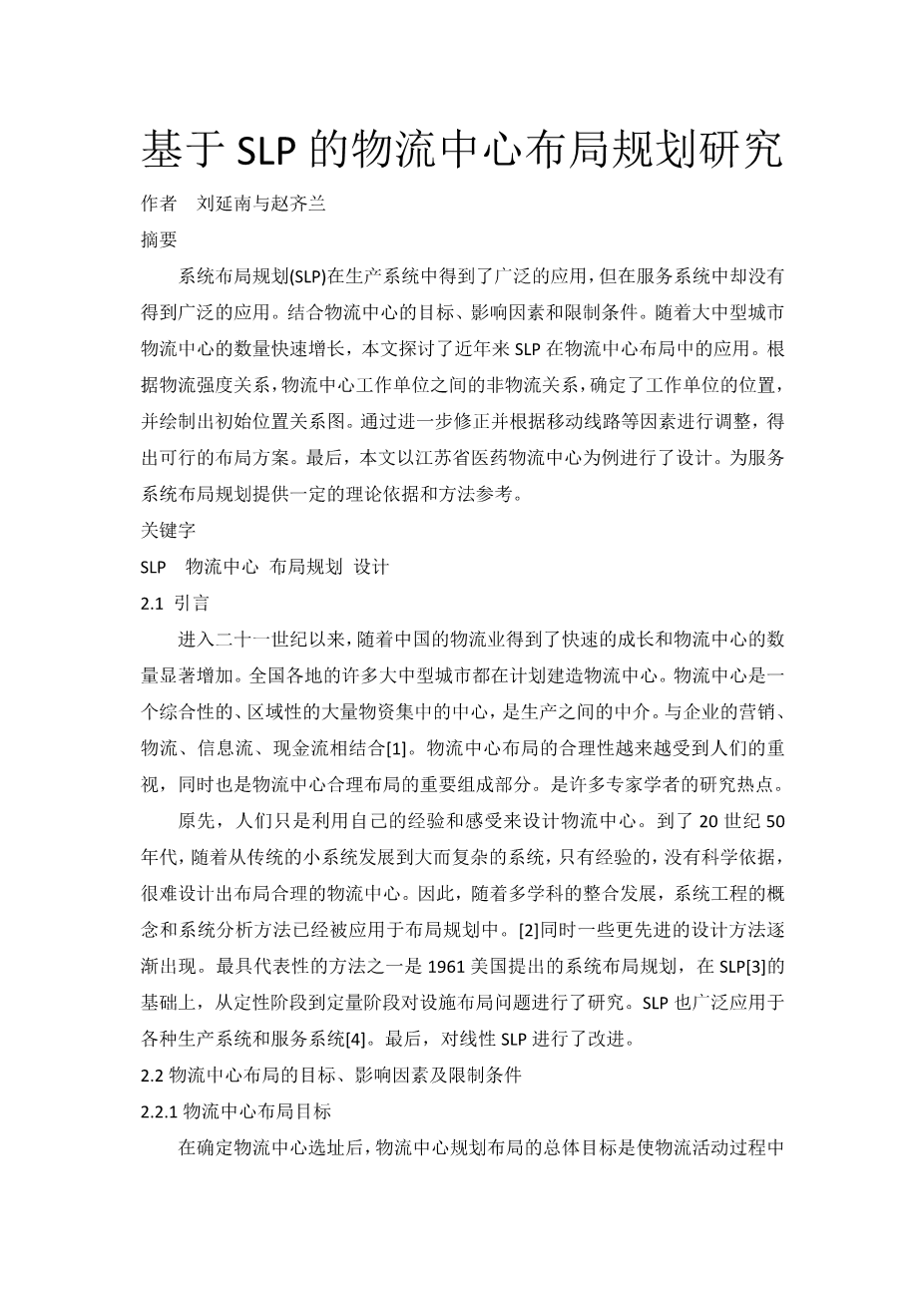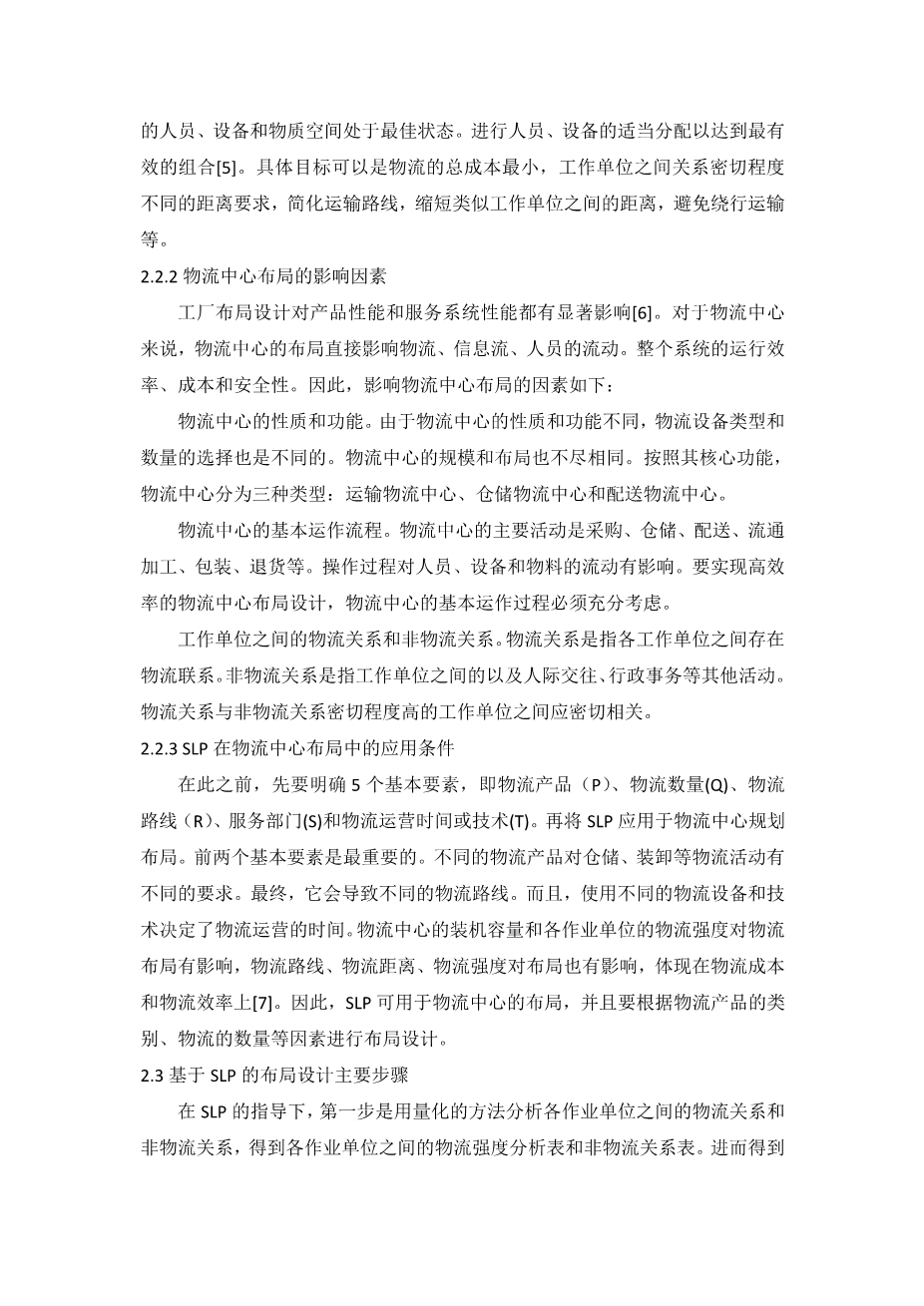Research on Logistics Center Layout Based on SLP
Authors
Authors and affiliations
Yannan LiuEmail authorQilan Zhao Yannan Liu and Qilan Zhao
Abstract
Systematic layout planning (SLP) has been widely applied to the production system, but not to the service system. Combined with the goals, influencing factors, and conditions of logistics center layout, this paper probes into the application of SLP to the layout of the rapidly increasing logistics centers in large- and medium-sized cities in recent years. According to the logistics relationship and non-logistics relationship between work units in the logistics center, the author decides the position of work units and maps out the initial position relationship chart. Through further amendments and adjustment based on the move line and other factors, the author gets the feasible layout plan. Finally, this paper uses a medicine logistics center in Jiangsu Province as an example to design, analyze, and evaluate for the purpose of providing some theoretical basis and method for reference in the service system layout.
Keywords
SLP Logistics center Layout Design
2.1 Introduction
Since entering the twenty-first century, the logistic industry in China has been rapidly growing up and the number of logistics centers has increased dramatically. Many large- and medium-sized cities across the country are planning to set up logistics centers. Logistics center is a comprehensive, regional concentration of large quantities of materials, and it is an intermediary between production and marketing enterprises, integrating commodity flow, logistics, information flow, and cash flow [1]. The reasonable layout of logistics centers has taken more and more attention, and it is also the research focus of many scholars.
At first, people use their experience and feeling to design the logistics centers. In the 1950s, developed from the traditional small systems to big and complex systems, it is difficult to design the logistics centers only with experience. And so, with the integration development of the diverse discipline, the system engineering concept and system analysis method have been used in layout planning [2], and some more advanced design methods have gradually emerged. One of the most representative methods is systematic layout planning (SLP) proposed by American R. Muther in 1961. Study on facilities layout problem is developed from qualitative stage to quantitative stage on the basis of SLP [3]. SLP is also widely applied to various production systems and service systems [4]. Finally, it improves to move line SLP.
2.2 The Goals, Influencing Factors, and Conditions of Logistics Center Layout
2.2.1 The Goals of Logistics Center Layout
After determining the location of a logistics center, the overall goal of logistics center layout is to make the personnel, equipment, and material space in the logistics activity process be in the most appropriate allocation and the most effective combination [5]. The specific goals can be the minimum total cost of material flow, work units1 of high relationship close degree close to each other, simplifying transport routes, shortening the distance between similar work units, avoiding roundabout transport, etc.
2.2.2 Influencing Factors of Logistics Center Layout
Layout design has a significant effect on a production performance or service system performance [6]. For a logistics center, its layout has direct influence on logistics, information flow, the logistics operation efficiency, cost, and safety of the whole system. So the influencing factors of logistics center layout are as follows:
- The nature and function of a logistics center. Because the nature and function of the logistics centers is different, it is different to choose equipment type and quantity. The size and layout of logistics centers are also not the same. According to its core function, the logistics center has three types: transit logistics center, storage logistics center, and distribution logistics center.
- The basic operation process of a logistics center. The main activities of the logistics center are purchasing, warehousing, distribution, circulation processing, packing, returning, and so on [5]. The operation process has an influence on the move line of personnel, equipment, and material. To realize the efficient logistics, the basic operation process of a logistics center should be in consideration when layout designing.
- Logistics relationship and non-logistics relationship between work units. Logistics relationship is that there is logistics contact between work units. And interpersonal contact, administrative affairs, and other activities can be expressed as non-logistics relationship between work units. Work units of high relationship close degree should be close to each other.
2.2.3 Application Conditions of SLP in the Layout of Logistics Center
It is necessary to specify five basic elements, namely P (logistics products), Q (logistics quantity), R (logistics routes), S (service sectors), and T (logistics operation time or technology) before applying SLP to logistics center layout. The first two basic elements are the most important. Different logistics products have different demands on storage, loading, and other logistics activities. Ultimately, it leads to different logistics routes. What is more, using different logistics equipment and technology determines logistics operation time. The work quantity of the logistics center reflects the logistics intensity2 of all work units; logistics routes, distance, and logistics intensity have an influence on layout, which is reflected in the logistics cost and eff
全文共18025字,剩余内容已隐藏,支付完成后下载完整资料


英语原文共 13 页,剩余内容已隐藏,支付完成后下载完整资料
资料编号:[16104],资料为PDF文档或Word文档,PDF文档可免费转换为Word


